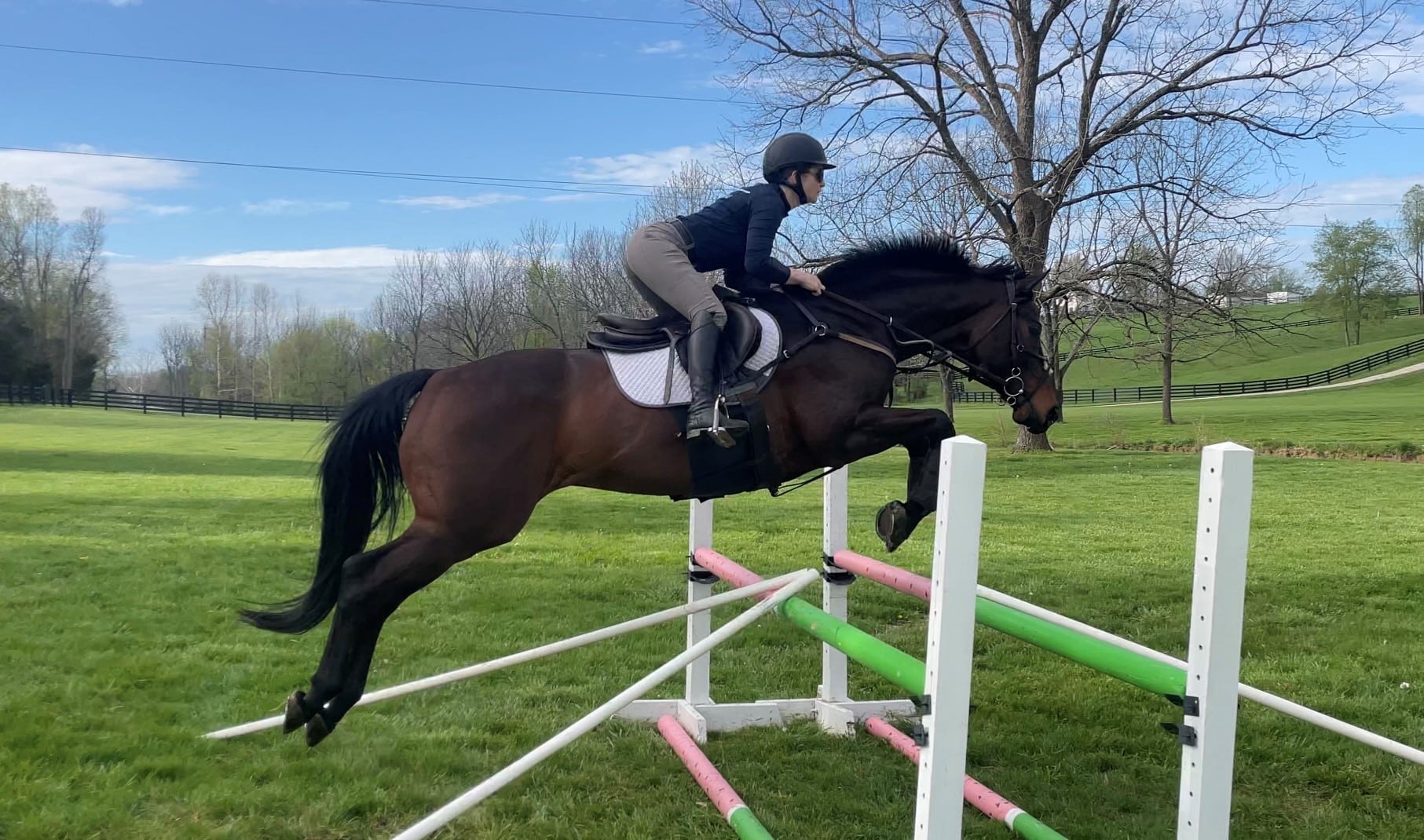
To find the correct distance, ride the horse forward in balance to the base of the jump, says Rosie Napravnik. Photo courtesy Rosie Napravnik
Q: I’ve had my OTTB for about a year, and he’s coming along well as an eventer, but if he gets a long distance or knocks a rail, he will land and scoot out from under me, like he’s offended. Other than trying to only get a good distance, how can I fix this? I’ve fallen off a few times!
A: This is a common but relatively uncomplicated issue. Many Thoroughbreds do get offended when they make a mistake because they are so eager to please. This is a sign of a careful horse that doesn’t like hitting a rail. That’s great! Your horse might be reacting to hitting a rail, but he might also be running off to catch his balance on landing, whether because he had to chip in a stride or ended up taking a long spot. Of course, getting to the right distance to each fence is the goal, but it takes time, practice and experience to master that. One key factor to finding the correct distance is to ride your horse forward, in balance, to the base of the jump — just like how we balance them when we are riding on the flat. Of course, we want them to move forward into balance instead of running away.
To do this you will need to be very intentional upon landing. As riders, one of the most common mistakes we tend to make is to ride to a jump, but not away from it. So for a horse that wants to run off on landing, you’ll want to execute a very intentional ride after the fence. If your horse is reactive on landing, make a very small turn, and use your leg to encourage him to move his hind legs up underneath him, helping him stay balanced. Whatever happens before and over a jump, have a plan on the other side, and ride your plan immediately. You’ll want to be able to adjust to whichever ride the horse needs when he lands. If you have a good distance and land soft and in balance, you might not have to think too much to get to the next jump, circle or whatever. If you’ve had a funny distance coming in, you’ll want to be ready to help your horse by riding him forward, with intention, back into balance on the other side.
Now, riding a horse forward when he’s running off after a fence might sound contradictory. If that doesn’t seem like something you feel confident doing, have a professional put a few rides on your horse to help him figure out how to maintain his balance before, during and after a jump.
Rosie Napravnik is a champion jockey turned OTTB advocate and eventer. She transitions horses retiring from racing at her Rosie Napravnik Off-Track Sporthorses, in Simpsonville, Kentucky.

